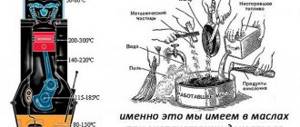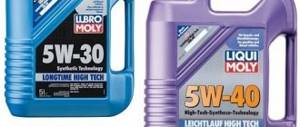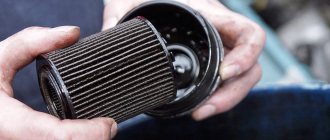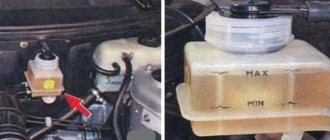To carry out operations with heavy equipment, it is impossible to do without a jack. This device is well known to car drivers. Not a single construction enterprise can do without such a car lift. In order for such an automatic press to work for a long time, you need to know exactly what kind of hydraulic oil to pour into the jack. If you choose the right composition of the lubricating fluid, you can achieve high performance of the device.
Basic properties of hydraulic oil
The type of oil to be poured into the hydraulic jack depends on the problem that the device must solve. The operation of certain structural parts depends on the viscosity of the hydraulic fluid used. The oil should not be very liquid, and the density should be average.
With a high viscosity index, the jack can be used when the temperature drops significantly. It is very important that the device is equipped with a special filter. Passing through it, the oil will be cleansed of harmful impurities and accumulated gases.
If you correctly determine what kind of oil to pour into a hydraulic jack, it is possible to ensure the longevity of the parts of the device, as well as prevent their increased wear.
High-quality oil for hydraulic equipment has several positive properties:
- Has excellent antioxidant characteristics.
- Not afraid of temperature fluctuations.
- Atmospheric influences do not affect the initial properties of the liquid.
- Increases the life of the system.
- Doesn't foam.
If you incorrectly determine what kind of oil to pour into a hydraulic jack, it is very easy to damage the device. It will require major repairs, as well as large financial costs.
Main requirements for hydraulic oil
Hydraulic compounds for lifts are divided into three main groups: glycol; synthetic; petroleum _
Also, such oils are popular for servicing aircraft, ships, marine equipment, engines, and shock absorbers.
Almost all types of hydraulic fluids are made from base oils, which are produced by processing petroleum fractions. Then the base base is cleaned and special additives are added . Due to such additives, hydraulic oil does not foam and provides the mechanism with protection from oxidation and corrosion.
When choosing oil for a jack, you need to pay attention to some indicators:
- The viscosity of the composition should be medium. The oil should not be too viscous or too thin. The ease of movement of parts in the equipment depends on this indicator.
- Liquid filterability is another important parameter. The oil should pass well through the filter without foaming. Filtration of hydraulic fluid is necessary to clean it from various impurities and gases.
- The viscosity index or temperature indicator of the oil is also important and should be of great importance.
- The anti-corrosion characteristics of the composition must be excellent, otherwise the mechanism will very quickly fail.
Read also: Milling and copying machine for metal
A correctly selected hydraulic oil will not be affected by the chemical composition of the environment and high temperature fluctuations. The liquid will not undergo oxidation and will protect the mechanism from premature wear.
Features of using hydraulic oil
In the warm season, the mechanisms can be filled with any type of oil, but in winter it is recommended to choose a synthetic composition. This is due to the fact that the synthetic liquid will not freeze even in severe frost, which means that the equipment can be safely used.
Hydraulic oil should be changed at least twice a year. If the equipment is used systematically, then it should be washed , while replacing the old hydraulic composition with a new one. In this case, the jack will work for many years without any repairs.
Qualitative characteristics of the liquid
The most important indicator of high quality hydraulic oil is its viscosity. It determines how easily the parts of the device will move. That is why, when choosing a liquid, they strive to use the optimal viscosity value. The properties of the liquid are influenced by the temperature index (viscosity index). It should have high values .
Hydraulic oil never oxidizes. It has excellent anti-corrosion characteristics, which increase the service life of the jack.
It is very important that the liquid has high filterability. In other words, it should easily pass through a filter that will cleanse it of harmful impurities. The lubricant must not form foam. The working environment must be easily freed from oxygen, as well as other accumulated gases.
Types of jacks
Operating this device does not require much physical effort. Simply press the lever and the hydraulic piston will begin lifting the load. Such systems can easily lift a structure weighing 50 tons. The industry produces these systems of several types:
- Roll-on.
- Bottled.
- Hooked.
The main advantage of these products is their high load capacity. This made it possible to work with jacks at service stations and perform various repair operations with any type of heavy equipment.
The only drawback of such a device is the impossibility of transporting the jack in an inverted position. Transportation should only be carried out in an upright position.
Hydraulic jack
A hydraulic jack is a device that allows you to lift and hold weights at a given height. Using this mechanism, you can perform the following manipulations:
- lift and hold the car body during repair work;
- raise the bridge span;
- carry out tension of high-voltage wires;
- transportation of construction materials and equipment;
- pipe laying
There are single-plunger and double-plunger models. According to the type of design, the mechanisms can be:
- bottled;
- rolling;
- hooked;
- two-level;
- diamond-shaped
Why are hydraulic models considered the best in the line of jacks? They have significant advantages:
- high efficiency (80%);
- smooth and silent;
- rigidity and strength of the structure;
- braking and stopping in a precisely specified place;
- significant carrying capacity.
But besides the advantages, it is necessary to note the disadvantages of the design:
- To avoid oil spillage, transportation must be carried out in a strictly vertical position;
- low speed;
- rise to a small height;
- inability to set the height when lowering the load.
The lifting capacity range of hydraulic models ranges from 2 to 200 tons. The most popular model is the bottle design, as it is the easiest to use.
The rolling jack can only be used on a level and hard surface. This mechanism is mounted on wheels and has a fairly large lever, which makes it difficult to reduce the impact force if necessary.
Monitoring the oil level and its cleanliness is the key to long-term, flawless operation of the mechanism.
How does the replacement take place?
The jack begins to work slowly if its tightness is lost and oil begins to leak out. In this case, it is necessary to change the oil and carry out maintenance of the product.
First, the jack needs to be disassembled. Remove dirt from the piston and clean parts from rust. Replace all gaskets to ensure that no leaks occur in the future. After reassembling the system, you can refill the jack with new hydraulic fluid.
After changing the lubricant, the jack must be re-pumped. The piston must be raised all the way. To make sure that the operation was successful, you need to open the plug, the filled oil should begin to flow out. This kind of work is best done by two people. One holds the jack, the other pumps it.
Sometimes beginners are faced with the problem of how to add oil to a hydraulic jack. They don't know where to put the lubricant. The problem can be solved very simply. There is a special hole on the body, closed with a screw plug. It is enough to unscrew it and add the missing liquid. Before a complete oil change, the system is first pumped well to expel excess air. New oil is added. All these operations can be performed independently, without turning to specialists.
Filling the rack and pinion device
The hole through which the liquid is poured is located near the flat base, at the bottom of the cylinder. To fill, you need to remove the plug. The oil can nozzle is inserted into the opened hole. As soon as the liquid begins to flow out, the filling stops. The plug returns to its place.
Refilling the bottle mechanism
First, the jack must be lowered. The existing exhaust valve turns counterclockwise. The plug is located on the outer cylinder. You need to remove it and insert the nose of the oil can. Filling continues to a level of 0.3 cm. After which the plug is installed again.
How to change the oil in a jack
A sign that the oil in the hydraulic jack needs to be changed is the slow rise and fall of the device. It is worth considering that liquid may leak if the device is transported incorrectly. In a horizontal position in a hydraulic device, liquid flows to the valves, after which it begins to flow out. The place of the working fluid is taken by air, which significantly reduces the efficiency of the structure.
When considering how to fill a bottle jack, you need to pay attention to the following points:
- Before replacing the working fluid, it is recommended to disassemble the structure. This is due to the fact that it is necessary to thoroughly clean the piston from dirt and corrosion. Such substances can cause structural damage. On sale there are hydraulic jacks of collapsible or non-dismountable type. The first is characterized by the fact that all elements can be disassembled if desired. As a rule, it is enough to remove the rod with the piston
- In some cases, the gasket is replaced. It is worth considering the fact that damage to the sealing elements is not always noticeable. An example is a change in the stiffness index. You can find all seals on sale or restore the condition of old ones, provided there are no serious mechanical damages. To do this, you can use ammonia, in which the sealing elements are soaked. After a short treatment, the rubber regains its elasticity and provides the required level of insulation.
- Filling of oil into the hydraulic jack is carried out through a special connector. The plug is usually attached to a thread. When replacing the substance, the structure is pumped, since air can significantly reduce the efficiency of the lifting mechanism. It is recommended to pump several times, as air bubbles are difficult to remove.
Pouring oil into the jack
It is worth considering that when draining the oil, there is a possibility of losing the metal ball that acts as a valve. That is why the procedure in question must be carried out carefully.
Lift oil type
Several types of liquid can be poured into the system. They may differ in the amount of mineral additives and density value. It is very important to correctly determine what kind of oil to pour into the jack . The most suitable technical fluids are:
- I30A.
- I40A.
- I50A.
Of course, it is better to use the liquid specified in the operating instructions for the device. There is a special mark on the body of the product that determines the level of lubrication. There should be no air bubbles in the poured liquid.
Useful tips
If a complete change of hydraulic fluid has been made, it is necessary to bleed the air. Simply raise the jack to its maximum height and lower it. It is advisable to repeat the operation several times.
Do not pour brake fluid into the system. Check valves must not be opened. If you don’t know how to do this, you can damage the device’s bearings and springs.
Before using the equipment, be sure to read its technical description. If you follow the operating rules and fill only high-quality lubricant, you can extend the service life of the hydraulic jack.











